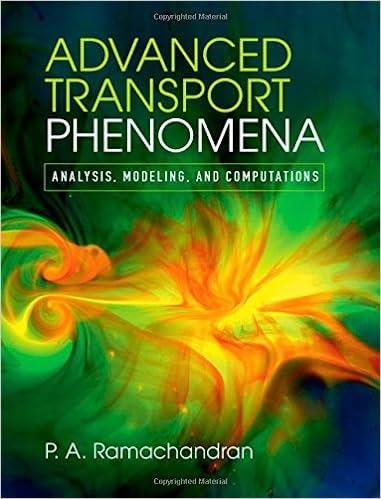The simple formula (C_{p}=(5 / 2) R) (molar units) is valid only for monatomic gases. A simple
Question:
The simple formula \(C_{p}=(5 / 2) R\) (molar units) is valid only for monatomic gases. A simple extension that has been suggested is
\[C_{p}=\left(5+N_{\mathrm{r}}\right) \frac{1}{2} R\]
where \(N_{\mathrm{r}}\) is the rotational degree of freedom, which is equal to 2 for linear molecules and 3 for a non-linear molecule.
Using this, compute the specific heat of methane at \(350 \mathrm{~K}\) and \(1 \mathrm{~atm}\) and compare your result with experimental values. Report your answer as both \(\mathrm{J} / \mathrm{mol} \cdot \mathrm{K}\) and \(\mathrm{J} / \mathrm{kg} \cdot \mathrm{K}\).
Similarly, for the thermal conductivity a relation of the following form is often used:
\[k=k_{\mathrm{mono}}+1.32\left(c_{p}-\frac{5}{2} \frac{R}{M}\right) \mu\]
which is known as the Eucken correction to account for the internal degrees of freedom. Here \(k_{\text {mono }}\) is the value calculated for a monatomic gases, and \(c_{p}\) is in mass units.
Calculate \(k\) for methane under the same conditions based on this model and compare with the experimental value.
The Prandtl number, \(P r\), is an important dimensionless group in heat transfer and is defined as \(c_{p} \mu / k\). Estimate its value for methane.
Step by Step Answer:

Advanced Transport Phenomena Analysis Modeling And Computations
ISBN: 9780521762618
1st Edition
Authors: P. A. Ramachandran





